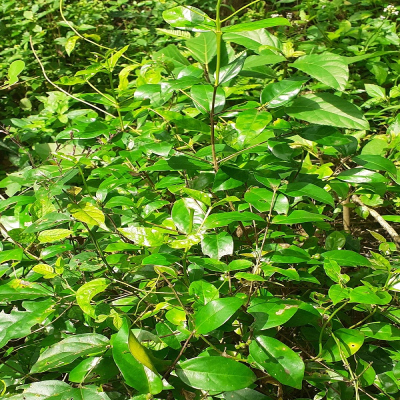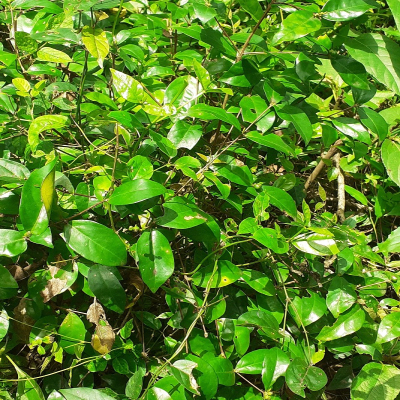Distribution and habitat: Throughout India
Botany: A large scandent tomentose shrub with young branches clothed with velvety pubescence.
- Leaves: Simple, opposite, ovate, more or less pubescent beneath, base rounded or often cordate, main nerves 4-6 pairs, petioles densely villous.
- Flowers: White, slightly fragrant, sessile in dense terminal capitate cymes at the extremities of short axillary branches.
- Fruits: Black, berries surrounded by suberect calyx teeth.
Properties: antimicrobial, antioxidant, anthelmintic, anti-inflammatory, cytotoxic
Chemical constituents: It contains secoiridoid, seco-iridoid lactone, seco-iridoid glucoside etc. The leaves contain friedelin, lupeol, botulin, α-amyrin, β-sterol, betulinic acid, ursolic acid, oleanoic acids. Leaves and flowers contain jasmolactones A-D, multiflorin, multifloroside, jasmultiside, hydroxyoleuropein etc. The oil from flowers contains highly aromatic compounds like eugenol,nerolidol, cadinol, jasmine, linalool, farnesol, β-farnesene etc
Uses: It is used in indolent ulcers, cardiotonic, inflammation, rheumatism and cephalalgia, The flowers are cardiotonic, detoxifying, emetic, laxative, and refrigerant. Bark is used to treat burns. The oils have various pharmacological properties like antioxidant, relaxant, analgesic, anxiety, antimicrobial, nematicidal, and lactifuge. It is used in cosmetic industry for making perfumes.
Propagation: By cuttings


